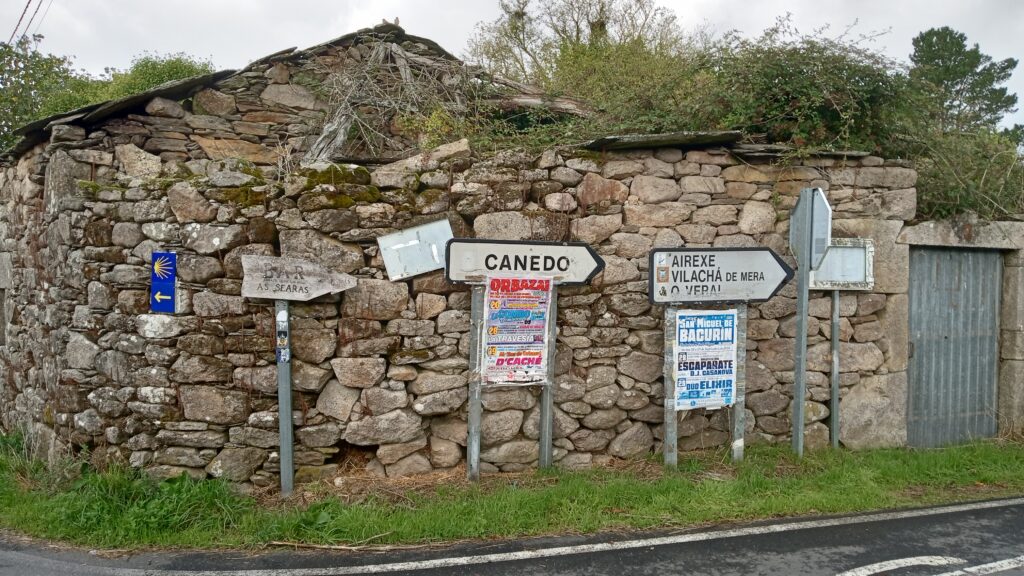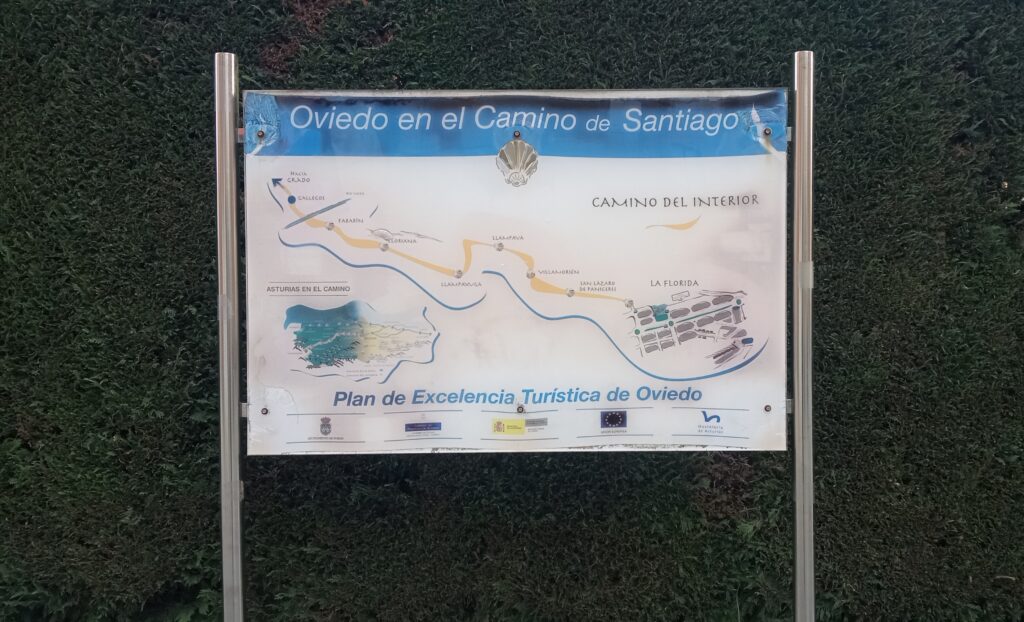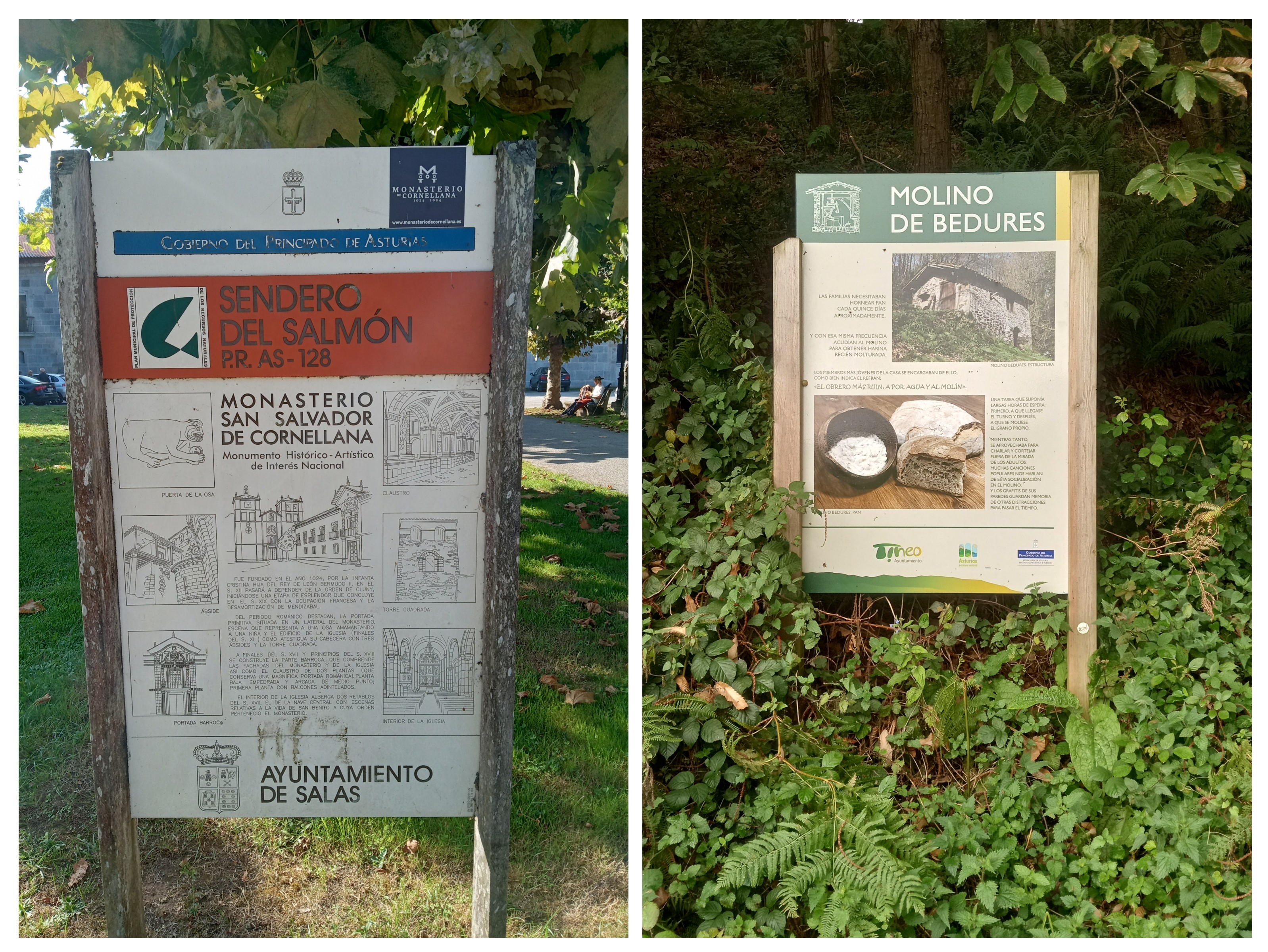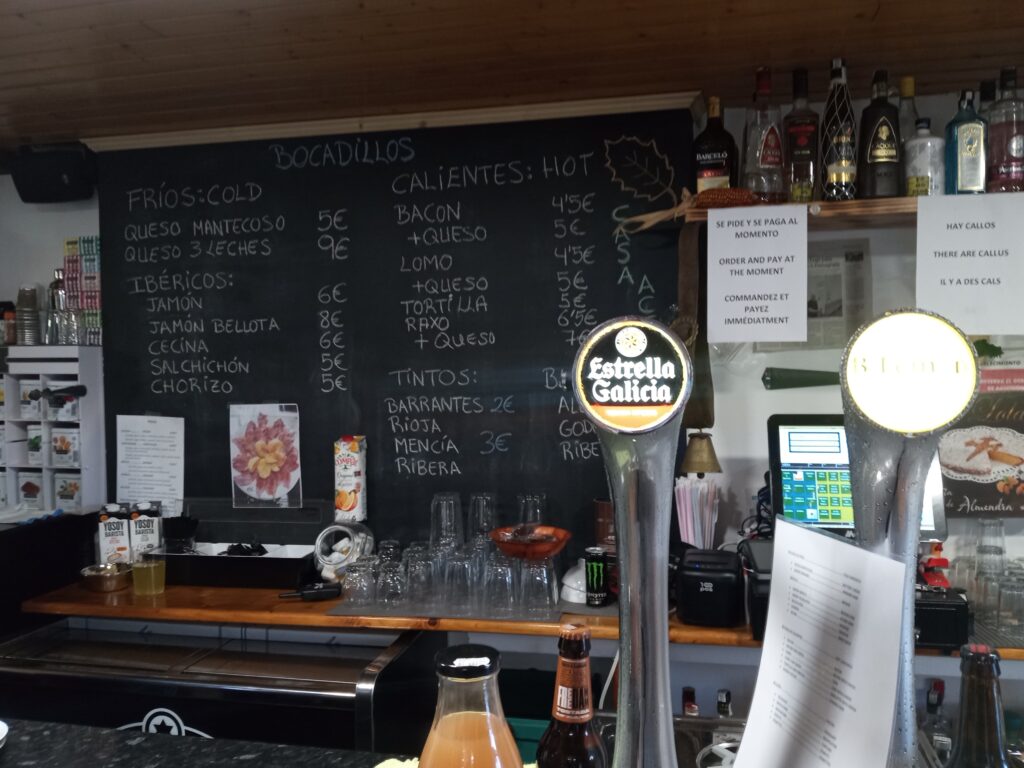
I only knew the basics when I first walked the Camino Francés in 2017. And I mean the basics. Adios, por favor and gracias. Armed with my phrasebook, I muddled along, relying mainly on hand gestures and fellow pilgrims who spoke more Spanish than I did.
After 37 days of walking, I’d practiced what I’d learned and mastered a few key phrases.
“Cafe con leche caliente, por favor”, being the most important, of course.
Despite being unable to speak the language, I still had a wonderful and enriching experience.

After my first Camino, I moved to Spain to work as an English language assistant. I arrived in Zaragoza, still only knowing the basics, and was thrown into the fire, to say the least. But immersion is the best way to learn and I picked up a lot. I’m still not fluent, but I’m getting there slowly, especially after spending a second year in Madrid.
“Poco a poco”, as they say.

Fast forward seven years since my first Camino, and I’ve just completed the Camino Primitivo.
Thousands of pilgrims walk the Francés every year and it’s easy to find locals who speak a little English. On the remote Primitivo, you’ll be among plenty of Spanish-only speakers.
I found that having some of the language made my Primitivo profoundly different from my Francés. But in the best way.
So, here’s how having a grasp of Spanish changed my experience:
It made communication easier
Being able to communicate with the local people along the Camino was, by far, the best part of knowing Spanish.
Folks in Camino towns love to stop and chat. After all, they’re in no rush. Talking to the locals on my Primitivo is a memory I will always treasure. Like, the old woman in a small-town church who shared that she was born in that town and met her husband there. A local resident near Grado who offered me water and told me to be careful. Or the farmer who taught me all about the leafy green vegetables in his garden as I walked by.
My Spanish helped me ask for what I wanted or needed. It helped me understand what people were saying to me. And I mostly knew what I was ordering in restaurants.
I learned more

Knowing Spanish also helped me learn about what I was seeing around me.
Along The Way, there are hundreds of historic sights. But many of the explanations are only written in Spanish. I like to learn about what I’m looking at, so being able to read about the history of a monastery or a set of ancient ruins gave me a broader understanding of the area I was walking through.
It showed respect for the local people
I’ve seen many pilgrims walk into an albergue, bar or restaurant and automatically start speaking English to the people working there. I’ve also seen pilgrims insist that workers/owners along the Camino should be able to speak English.
Everyone working on the Camino knows that pilgrims are visitors. There is no expectation for pilgrims to be fluent. But a little bit goes a long way. Even if it’s just hola or gracias.
I’ve experienced people’s attitudes change when I speak Spanish with them. They appreciate it. And their entire demeanor turns around. Even if you just try, Spaniards love it.
Challenges were easier to overcome

My Primitivo was perfect up until Day 4. And from that point on, I faced one challenge after the other. I picked up bedbugs. I injured my knee. I caught a cold. And the rain would not stop falling. I felt like St. James was out to get me.
But being able to speak Spanish, although not perfectly, helped me get through the more difficult times.
I was able to tell a hospitalera that I got bitten and needed help washing my clothes and backpack. And I could understand her as she tried to assist me. I was able to go to the pharmacy and say that I needed medication for both my cold and my knee pain. And I could understand the instructions at a laundromat in Lugo when all my clothes got soaked in a downpour.
Speaking the language made these challenges easier. But it still didn’t stop me from crying a few times.

So, do you need to know how to speak Spanish to have an unforgettable Camino? No.
But taking a Spanish class or learning a few words and phrases before you go will enhance your experience. It will help you build connections with those you otherwise would not. You gain a better understanding of the place you’re visiting. And it shows respect for the local people.
And that’s what the Camino spirit is all about.
Buen Camino!